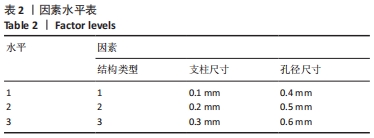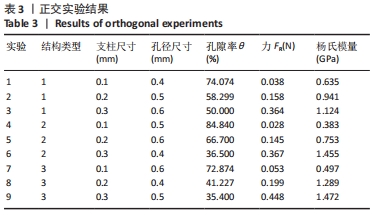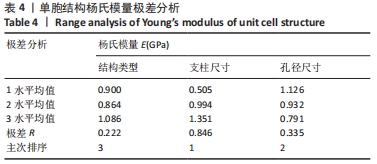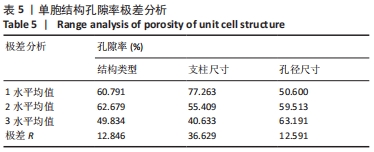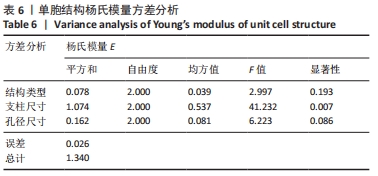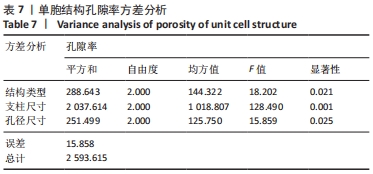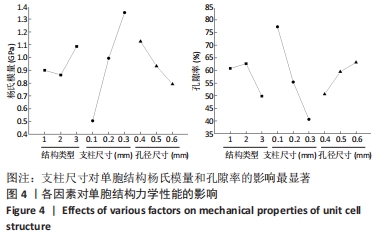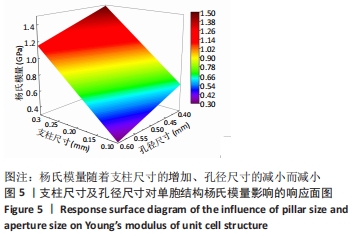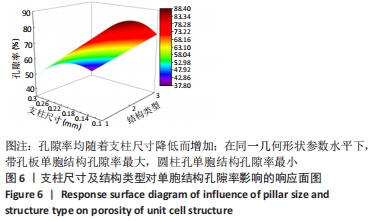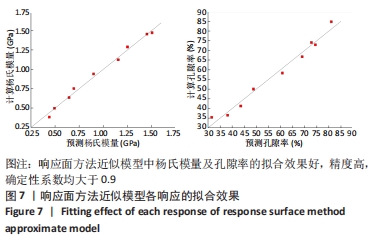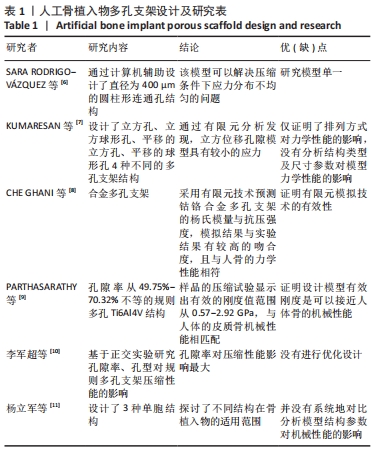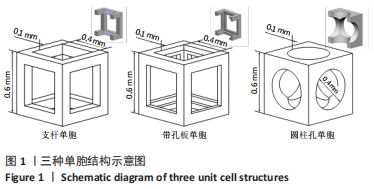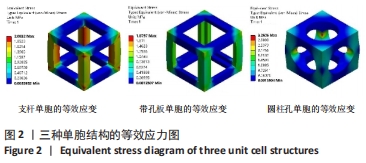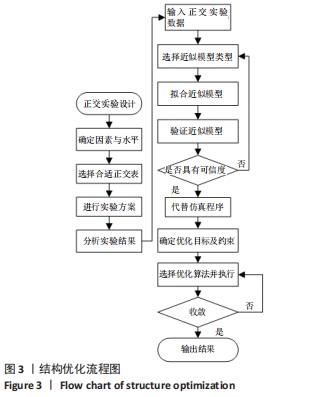中国组织工程研究 ›› 2022, Vol. 26 ›› Issue (28): 4429-4434.doi: 10.12307/2022.293
• 组织工程骨材料 tissue-engineered bone • 下一篇
基于响应面法的人工股骨单胞结构设计及优化
连婷婷1,陈学文1,张 博1,王广欣1,Akiyoshi Osaka 1,2
- 1河南科技大学材料科学与工程学院,河南省洛阳市 471023;2冈山大学工学院,日本岗山津岛 700-8530
Design and optimization of artificial femoral unit cell structure based on response surface methodology
Lian Tingting1, Chen Xuewen1, Zhang Bo1, Wang Guangxin1, Akiyoshi Osaka1, 2
- 1College of Materials Science and Engineering, Henan University of Science and Technology, Luoyang 471023, Henan Province, China; 2Institute of Engineering, Okayama University, Tsushima 700-8530, Okayama, Japan
摘要:
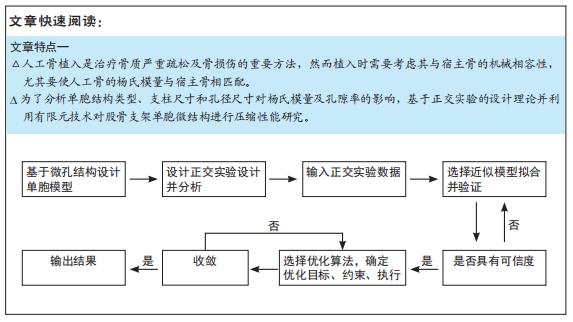
文题释义:
响应面法:采用多项式函数拟合设计空间,它实用性强、适用范围广,具有良好的鲁棒性。
杨氏模量:在骨骼的各种生物力学参数(刚度、强度、蠕变和疲劳、渗透等)中,杨氏模量引起了最大的研究兴趣,因为其对于表征各种骨骼病理学和指导人工植入物设计至关重要。
背景:人工骨植入是治疗骨质严重疏松及骨损伤的重要方法,然而植入时需要考虑其与宿主骨的机械相容性,尤其要使人工骨的杨氏模量与宿主骨相匹配。
目的:分析单胞结构类型、支柱尺寸和孔径尺寸对单胞结构的杨氏模量及孔隙率的影响。
方法:设计了3种可以描述骨骼微观结构的单胞结构(支杆单胞、带孔板单胞、圆柱孔单胞),设计正交实验,基于有限元模拟对单胞结构进行静力学分析。通过极差和方差分析研究3种单胞结构类型、支柱尺寸和孔径尺寸对单胞结构杨氏模量及孔隙率的影响。基于正交实验数据建立响应面近似模型,以股骨近端的松质骨杨氏模量为优化目标,选择序列二次规划法对单胞结构进行优化参数设计。
结果与结论:极差和方差分析的结果表明,以上3因素影响单胞结构杨氏模量的主次顺序为:支柱尺寸>孔径尺寸>结构类型,影响单胞结构孔隙率的主次顺序为:支柱尺寸>结构类型>孔径尺寸。选用响应面法建立近似模型,以股骨的杨氏模量0.97 GPa为优化目标,采用序列二次规划法对单胞结构进行优化,再进行模拟验证。验证结果表明所采用的优化设计方法是有效的,从而为人工骨的结构提供了新的设计方法。
https://orcid.org/0000-0002-2380-4701 (连婷婷)
中国组织工程研究杂志出版内容重点:生物材料;骨生物材料;口腔生物材料;纳米材料;缓释材料;材料相容性;组织工程
中图分类号:
